馃摎 This guide explains how to use **Weights & Biases** (W&B) with YOLOv5 馃殌. UPDATED 29 September 2021.
- [About Weights & Biases](#about-weights-&-biases)
- [First-Time Setup](#first-time-setup)
- [Viewing runs](#viewing-runs)
- [Disabling wandb](#disabling-wandb)
- [Advanced Usage: Dataset Versioning and Evaluation](#advanced-usage)
- [Reports: Share your work with the world!](#reports)
## About Weights & Biases
Think of [W&B](https://wandb.ai/site?utm_campaign=repo_yolo_wandbtutorial) like GitHub for machine learning models. With a few lines of code, save everything you need to debug, compare and reproduce your models 鈥� architecture, hyperparameters, git commits, model weights, GPU usage, and even datasets and predictions.
Used by top researchers including teams at OpenAI, Lyft, Github, and MILA, W&B is part of the new standard of best practices for machine learning. How W&B can help you optimize your machine learning workflows:
- [Debug](https://wandb.ai/wandb/getting-started/reports/Visualize-Debug-Machine-Learning-Models--VmlldzoyNzY5MDk#Free-2) model performance in real time
- [GPU usage](https://wandb.ai/wandb/getting-started/reports/Visualize-Debug-Machine-Learning-Models--VmlldzoyNzY5MDk#System-4) visualized automatically
- [Custom charts](https://wandb.ai/wandb/customizable-charts/reports/Powerful-Custom-Charts-To-Debug-Model-Peformance--VmlldzoyNzY4ODI) for powerful, extensible visualization
- [Share insights](https://wandb.ai/wandb/getting-started/reports/Visualize-Debug-Machine-Learning-Models--VmlldzoyNzY5MDk#Share-8) interactively with collaborators
- [Optimize hyperparameters](https://docs.wandb.com/sweeps) efficiently
- [Track](https://docs.wandb.com/artifacts) datasets, pipelines, and production models
## First-Time Setup
<details open>
<summary> Toggle Details </summary>
When you first train, W&B will prompt you to create a new account and will generate an **API key** for you. If you are an existing user you can retrieve your key from https://wandb.ai/authorize. This key is used to tell W&B where to log your data. You only need to supply your key once, and then it is remembered on the same device.
W&B will create a cloud **project** (default is 'YOLOv5') for your training runs, and each new training run will be provided a unique run **name** within that project as project/name. You can also manually set your project and run name as:
```shell
$ python train.py --project ... --name ...
```
YOLOv5 notebook example: <a href="https://colab.research.google.com/github/ultralytics/yolov5/blob/master/tutorial.ipynb"><img src="https://colab.research.google.com/assets/colab-badge.svg" alt="Open In Colab"></a> <a href="https://www.kaggle.com/ultralytics/yolov5"><img src="https://kaggle.com/static/images/open-in-kaggle.svg" alt="Open In Kaggle"></a>
<img width="960" alt="Screen Shot 2021-09-29 at 10 23 13 PM" src="https://user-images.githubusercontent.com/26833433/135392431-1ab7920a-c49d-450a-b0b0-0c86ec86100e.png">
</details>
## Viewing Runs
<details open>
<summary> Toggle Details </summary>
Run information streams from your environment to the W&B cloud console as you train. This allows you to monitor and even cancel runs in <b>realtime</b> . All important information is logged:
- Training & Validation losses
- Metrics: Precision, Recall, mAP@0.5, mAP@0.5:0.95
- Learning Rate over time
- A bounding box debugging panel, showing the training progress over time
- GPU: Type, **GPU Utilization**, power, temperature, **CUDA memory usage**
- System: Disk I/0, CPU utilization, RAM memory usage
- Your trained model as W&B Artifact
- Environment: OS and Python types, Git repository and state, **training command**
<p align="center"><img width="900" alt="Weights & Biases dashboard" src="https://user-images.githubusercontent.com/26833433/135390767-c28b050f-8455-4004-adb0-3b730386e2b2.png"></p>
</details>
## Disabling wandb
- training after running `wandb disabled` inside that directory creates no wandb run

- To enable wandb again, run `wandb online`

## Advanced Usage
You can leverage W&B artifacts and Tables integration to easily visualize and manage your datasets, models and training evaluations. Here are some quick examples to get you started.
<details open>
<h3> 1: Train and Log Evaluation simultaneousy </h3>
This is an extension of the previous section, but it'll also training after uploading the dataset. <b> This also evaluation Table</b>
Evaluation table compares your predictions and ground truths across the validation set for each epoch. It uses the references to the already uploaded datasets,
so no images will be uploaded from your system more than once.
<details open>
<summary> <b>Usage</b> </summary>
<b>Code</b> <code> $ python train.py --upload_data val</code>
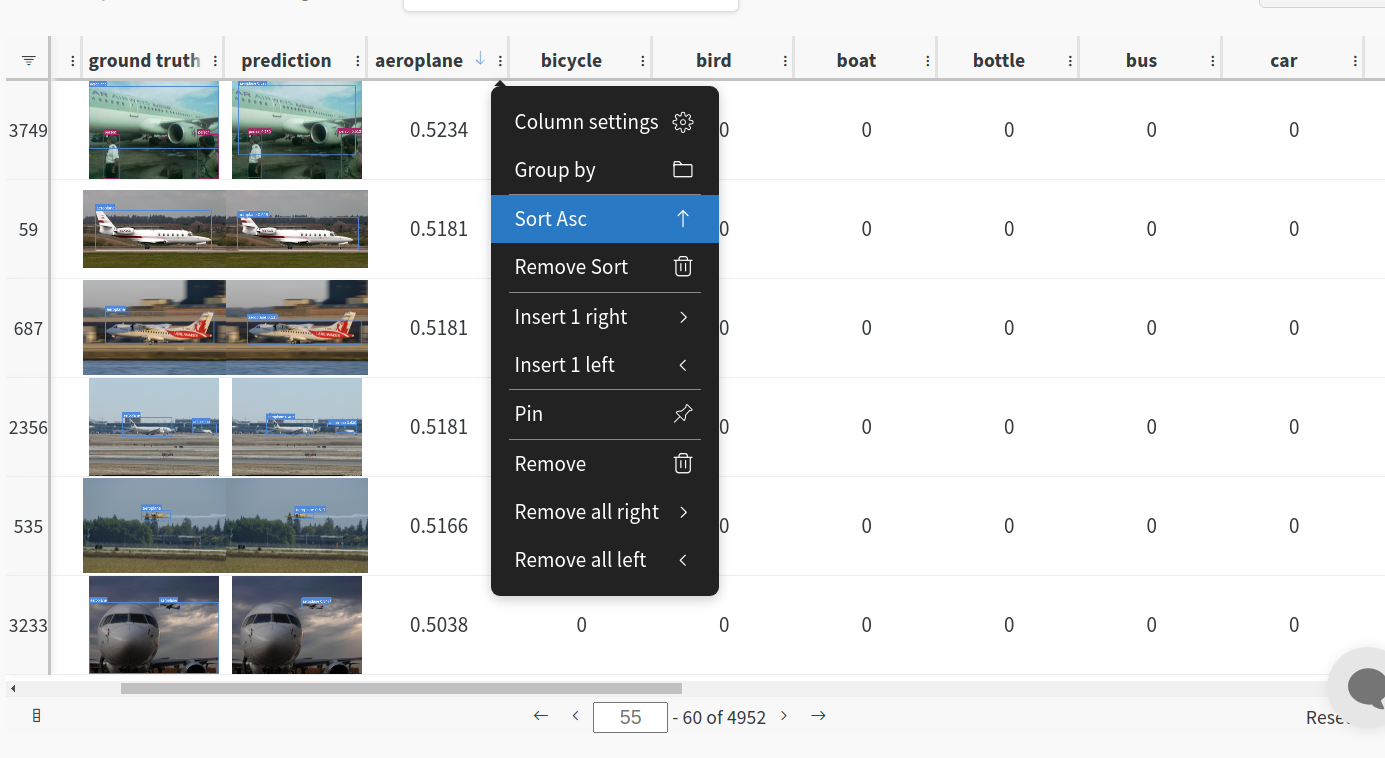
</details>
<h3>2. Visualize and Version Datasets</h3>
Log, visualize, dynamically query, and understand your data with <a href='https://docs.wandb.ai/guides/data-vis/tables'>W&B Tables</a>. You can use the following command to log your dataset as a W&B Table. This will generate a <code>{dataset}_wandb.yaml</code> file which can be used to train from dataset artifact.
<details>
<summary> <b>Usage</b> </summary>
<b>Code</b> <code> $ python utils/logger/wandb/log_dataset.py --project ... --name ... --data .. </code>
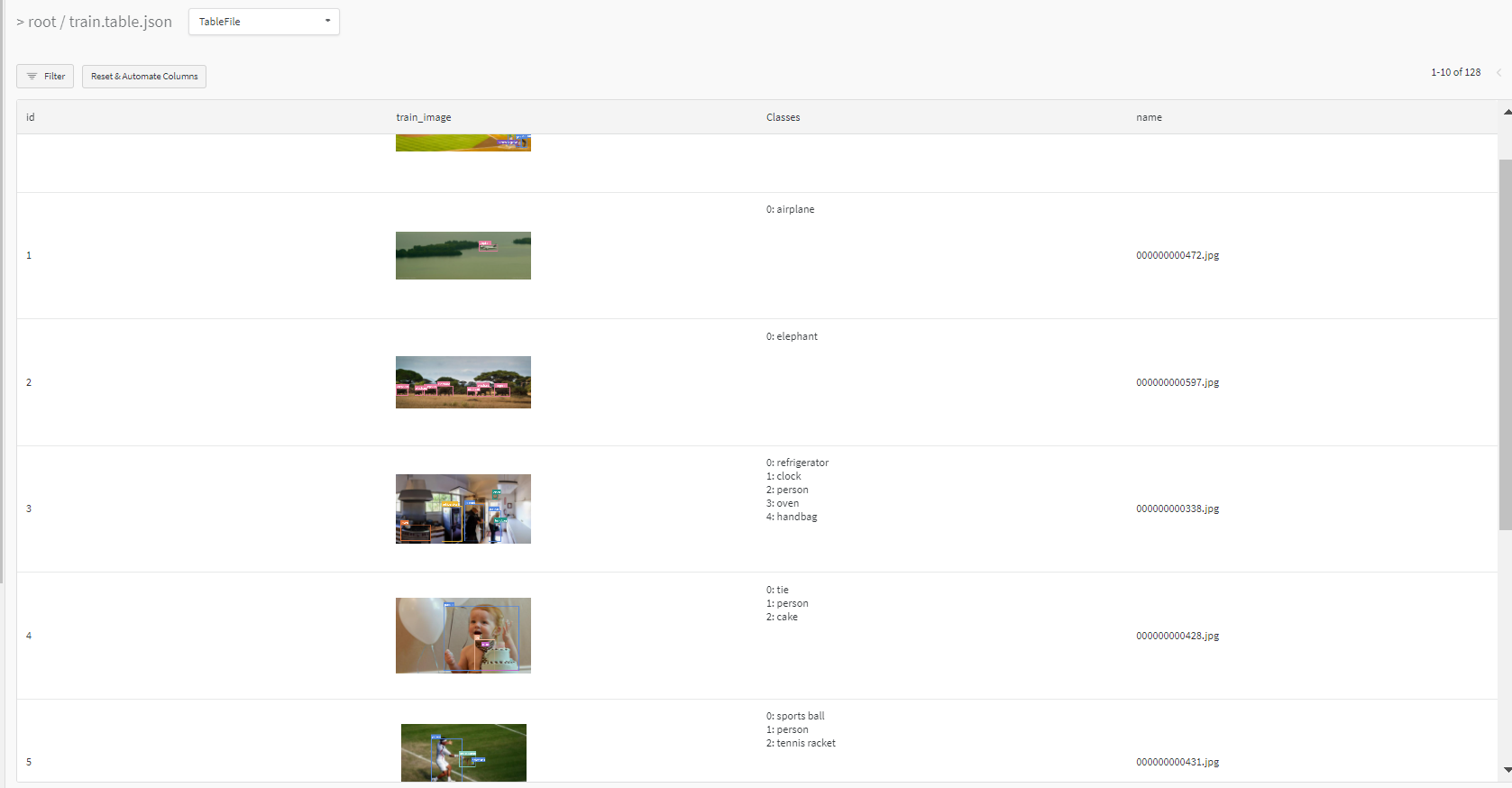
</details>
<h3> 3: Train using dataset artifact </h3>
When you upload a dataset as described in the first section, you get a new config file with an added `_wandb` to its name. This file contains the information that
can be used to train a model directly from the dataset artifact. <b> This also logs evaluation </b>
<details>
<summary> <b>Usage</b> </summary>
<b>Code</b> <code> $ python train.py --data {data}_wandb.yaml </code>
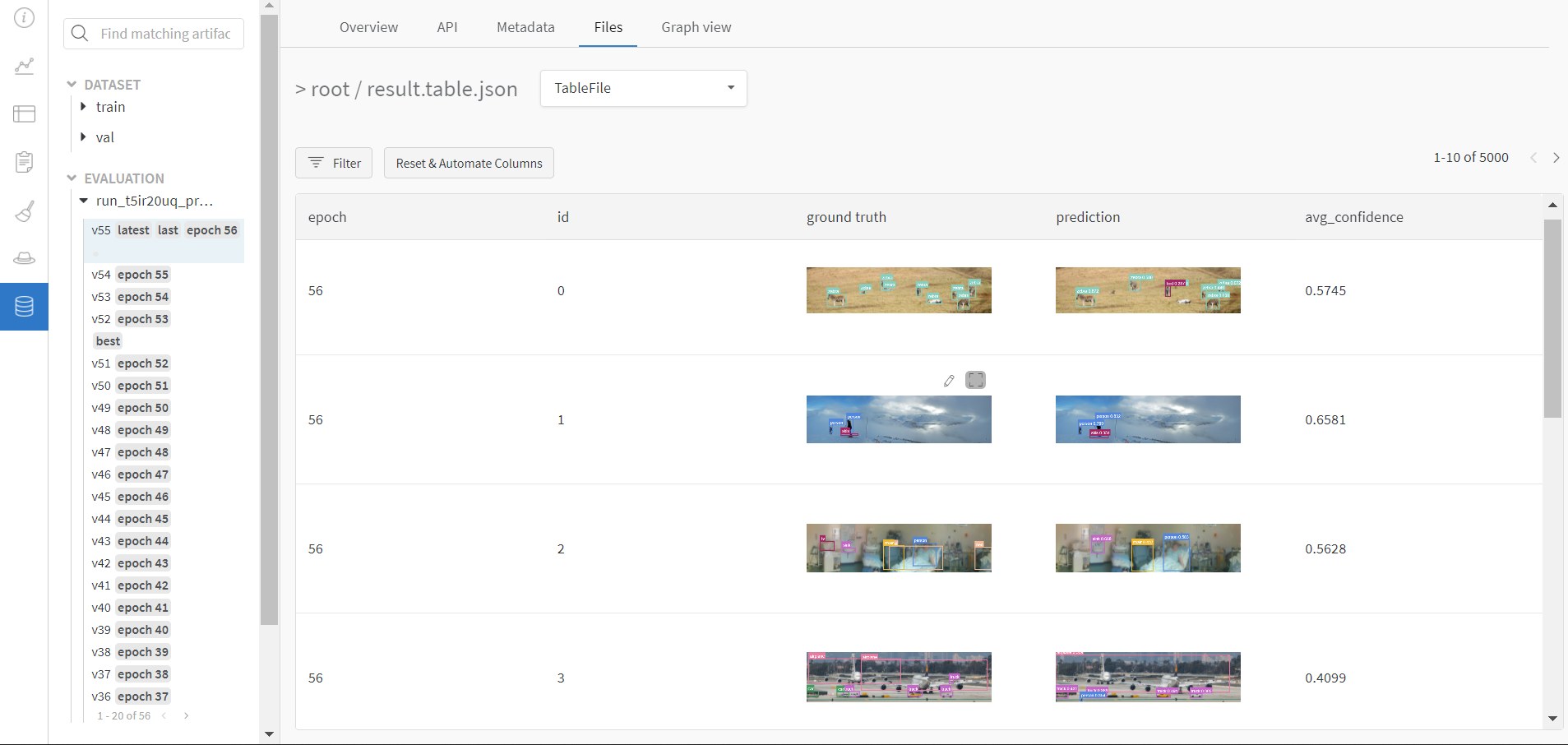
</details>
<h3> 4: Save model checkpoints as artifacts </h3>
To enable saving and versioning checkpoints of your experiment, pass `--save_period n` with the base cammand, where `n` represents checkpoint interval.
You can also log both the dataset and model checkpoints simultaneously. If not passed, only the final model will be logged
<details>
<summary> <b>Usage</b> </summary>
<b>Code</b> <code> $ python train.py --save_period 1 </code>
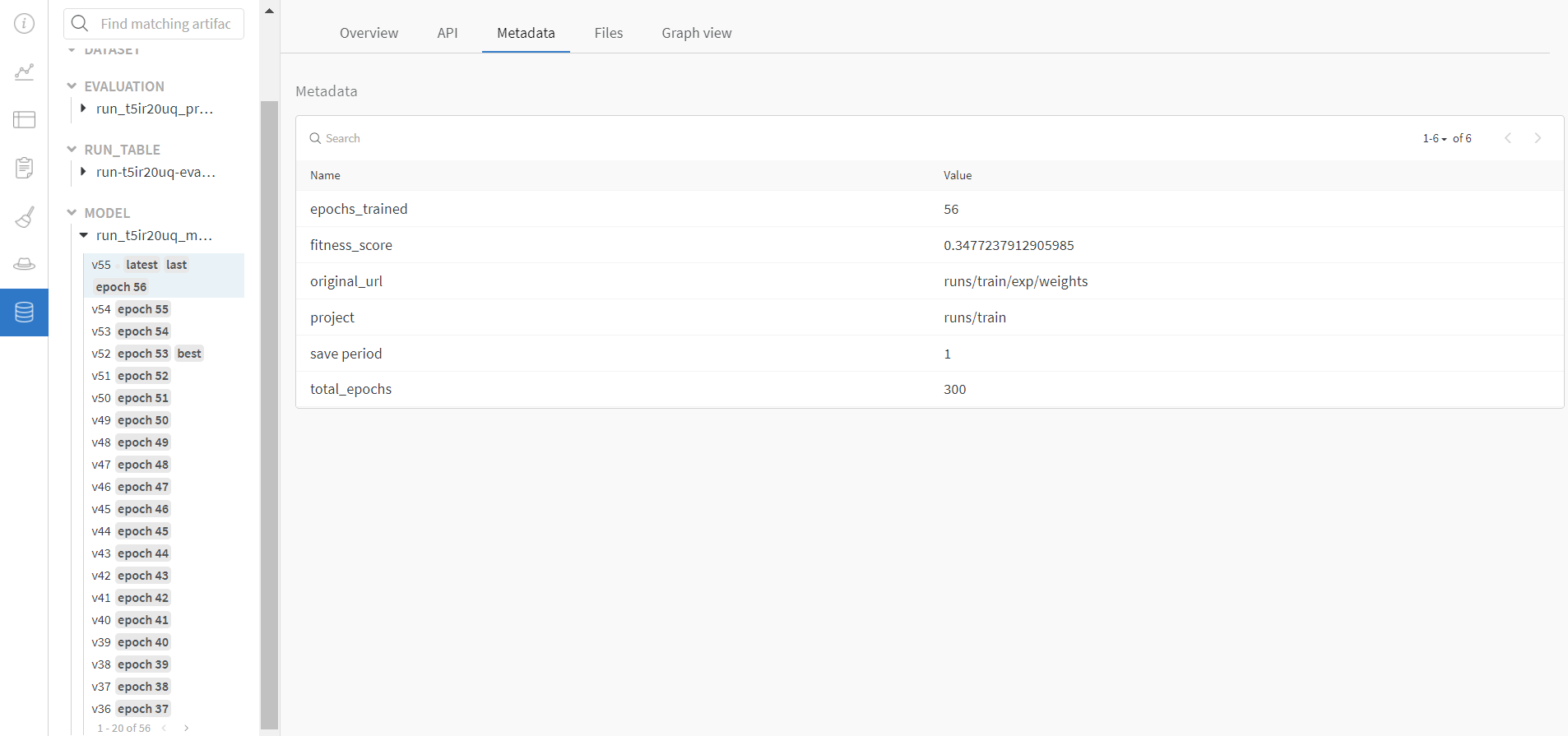
</details>
</details>
<h3> 5: Resume runs from checkpoint artifacts. </h3>
Any run can be resumed using artifacts if the <code>--resume</code> argument starts with聽<code>wandb-artifact://</code>聽prefix followed by the run path, i.e,聽<code>wandb-artifact://username/project/runid </code>. This doesn't require the model checkpoint to be present on the local system.
<details>
<summary> <b>Usage</b> </summary>
<b>Code</b> <code> $ python train.py --resume wandb-artifact://{run_path} </code>
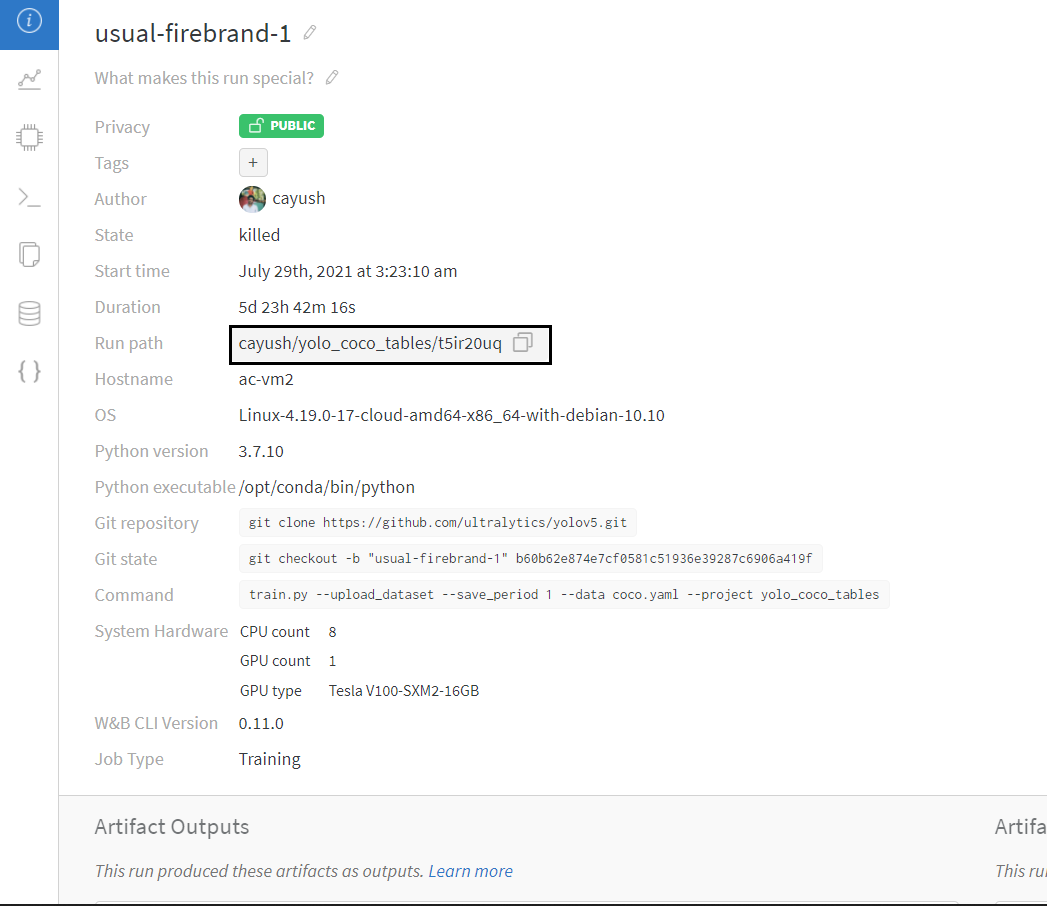
</details>
<h3> 6: Resume runs from dataset artifact & checkpoint artifacts. </h3>
<b> Local dataset or model checkpoints are not required. This can be used to resume runs directly on a different device </b>
The syntax is same as the previous section, bu
没有合适的资源?快使用搜索试试~ 我知道了~
温馨提示
【探索人工智能的宝藏之地】 无论您是计算机相关专业的在校学生、老师,还是企业界的探索者,这个项目都是为您量身打造的。无论您是初入此领域的小白,还是寻求更高层次进阶的资深人士,这里都有您需要的宝藏。不仅如此,它还可以作为毕设项目、课程设计、作业、甚至项目初期的立项演示。 【人工智能的深度探索】 人工智能——模拟人类智能的技术和理论,使其在计算机上展现出类似人类的思考、判断、决策、学习和交流能力。这不仅是一门技术,更是一种前沿的科学探索。 【实战项目与源码分享】 我们深入探讨了深度学习的基本原理、神经网络的应用、自然语言处理、语言模型、文本分类、信息检索等领域。更有深度学习、机器学习、自然语言处理和计算机视觉的实战项目源码,助您从理论走向实践,如果您已有一定基础,您可以基于这些源码进行修改和扩展,实现更多功能。 【期待与您同行】 我们真诚地邀请您下载并使用这些资源,与我们一起在人工智能的海洋中航行。同时,我们也期待与您的沟通交流,共同学习,共同进步。让我们在这个充满挑战和机遇的领域中共同探索未来!
资源推荐
资源详情
资源评论
收起资源包目录
 人工智能项目资料-基于yolov5算法的枯树识别.zip (185个子文件)
人工智能项目资料-基于yolov5算法的枯树识别.zip (185个子文件)  train.cache 1KB
train.cache 1KB val.cache 894B
val.cache 894B setup.cfg 2KB
setup.cfg 2KB Dockerfile 2KB
Dockerfile 2KB Dockerfile 846B
Dockerfile 846B Dockerfile-arm64 2KB
Dockerfile-arm64 2KB Dockerfile-cpu 2KB
Dockerfile-cpu 2KB tutorial.ipynb 54KB
tutorial.ipynb 54KB k60_1.jpg 1017KB
k60_1.jpg 1017KB k60_1.jpg 1017KB
k60_1.jpg 1017KB bus.jpg 476KB
bus.jpg 476KB k60_3.jpg 339KB
k60_3.jpg 339KB k60_2.jpg 318KB
k60_2.jpg 318KB k60_1.jpg 285KB
k60_1.jpg 285KB k60_3.jpg 175KB
k60_3.jpg 175KB k60_3.jpg 175KB
k60_3.jpg 175KB zidane.jpg 165KB
zidane.jpg 165KB k60_2.jpg 161KB
k60_2.jpg 161KB k60_2.jpg 161KB
k60_2.jpg 161KB optimizer_config.json 3KB
optimizer_config.json 3KB LICENSE 35KB
LICENSE 35KB README.md 11KB
README.md 11KB README.md 11KB
README.md 11KB README.md 10KB
README.md 10KB CONTRIBUTING.md 5KB
CONTRIBUTING.md 5KB README.md 2KB
README.md 2KB README.md 259B
README.md 259B val.cache.npy 1KB
val.cache.npy 1KB best.pt 13.79MB
best.pt 13.79MB dataloaders.py 54KB
dataloaders.py 54KB general.py 45KB
general.py 45KB common.py 41KB
common.py 41KB train.py 35KB
train.py 35KB train.py 33KB
train.py 33KB export.py 31KB
export.py 31KB wandb_utils.py 28KB
wandb_utils.py 28KB tf.py 27KB
tf.py 27KB plots.py 25KB
plots.py 25KB val.py 24KB
val.py 24KB val.py 20KB
val.py 20KB torch_utils.py 20KB
torch_utils.py 20KB __init__.py 19KB
__init__.py 19KB yolo.py 18KB
yolo.py 18KB augmentations.py 17KB
augmentations.py 17KB __init__.py 17KB
__init__.py 17KB train.py 16KB
train.py 16KB predict.py 15KB
predict.py 15KB metrics.py 15KB
metrics.py 15KB detect.py 14KB
detect.py 14KB dataloaders.py 14KB
dataloaders.py 14KB predict.py 11KB
predict.py 11KB loss.py 10KB
loss.py 10KB loss.py 9KB
loss.py 9KB val.py 8KB
val.py 8KB benchmarks.py 8KB
benchmarks.py 8KB hubconf.py 8KB
hubconf.py 8KB clearml_utils.py 7KB
clearml_utils.py 7KB autoanchor.py 7KB
autoanchor.py 7KB hpo.py 7KB
hpo.py 7KB plots.py 6KB
plots.py 6KB metrics.py 6KB
metrics.py 6KB hpo.py 5KB
hpo.py 5KB general.py 5KB
general.py 5KB comet_utils.py 5KB
comet_utils.py 5KB downloads.py 5KB
downloads.py 5KB experimental.py 4KB
experimental.py 4KB augmentations.py 4KB
augmentations.py 4KB triton.py 4KB
triton.py 4KB activations.py 3KB
activations.py 3KB autobatch.py 3KB
autobatch.py 3KB callbacks.py 3KB
callbacks.py 3KB __init__.py 2KB
__init__.py 2KB restapi.py 1KB
restapi.py 1KB sweep.py 1KB
sweep.py 1KB resume.py 1KB
resume.py 1KB log_dataset.py 1KB
log_dataset.py 1KB example_request.py 387B
example_request.py 387B __init__.py 0B
__init__.py 0B __init__.py 0B
__init__.py 0B __init__.py 0B
__init__.py 0B __init__.py 0B
__init__.py 0B __init__.py 0B
__init__.py 0B dataloaders.cpython-39.pyc 41KB
dataloaders.cpython-39.pyc 41KB dataloaders.cpython-310.pyc 41KB
dataloaders.cpython-310.pyc 41KB general.cpython-310.pyc 37KB
general.cpython-310.pyc 37KB general.cpython-39.pyc 37KB
general.cpython-39.pyc 37KB common.cpython-39.pyc 37KB
common.cpython-39.pyc 37KB common.cpython-310.pyc 36KB
common.cpython-310.pyc 36KB plots.cpython-39.pyc 21KB
plots.cpython-39.pyc 21KB plots.cpython-310.pyc 21KB
plots.cpython-310.pyc 21KB wandb_utils.cpython-310.pyc 19KB
wandb_utils.cpython-310.pyc 19KB torch_utils.cpython-310.pyc 16KB
torch_utils.cpython-310.pyc 16KB torch_utils.cpython-39.pyc 16KB
torch_utils.cpython-39.pyc 16KB yolo.cpython-310.pyc 16KB
yolo.cpython-310.pyc 16KB yolo.cpython-39.pyc 16KB
yolo.cpython-39.pyc 16KB __init__.cpython-310.pyc 14KB
__init__.cpython-310.pyc 14KB augmentations.cpython-39.pyc 13KB
augmentations.cpython-39.pyc 13KB augmentations.cpython-310.pyc 13KB
augmentations.cpython-310.pyc 13KB __init__.cpython-310.pyc 13KB
__init__.cpython-310.pyc 13KB metrics.cpython-39.pyc 11KB
metrics.cpython-39.pyc 11KB共 185 条
- 1
- 2
资源评论


妄北y
- 粉丝: 2w+
- 资源: 1万+
上传资源 快速赚钱
 我的内容管理
展开
我的内容管理
展开
 我的资源
快来上传第一个资源
我的资源
快来上传第一个资源
 我的收益 登录查看自己的收益
我的收益 登录查看自己的收益 我的积分
登录查看自己的积分
我的积分
登录查看自己的积分
 我的C币
登录后查看C币余额
我的C币
登录后查看C币余额
 我的收藏
我的收藏  我的下载
我的下载  下载帮助
下载帮助

 前往需求广场,查看用户热搜
前往需求广场,查看用户热搜最新资源
- 有清华大学2月最新汇报ppt及录音,下载后可发送全套
- esp32单片机,检测马达转速项目提供源码下载
- 前端框架-Vue2初体验
- 三菱FX3U PLC与E740变频器Modbus RTU通讯案例:启停控制、频率调节及参数读取的编程实现,三菱FX3U PLC与变频器Modbus RTU通讯控制案例:实现启停、频率设定与数据读取功能
- DeepSeek大模型安装助手简介
- 机器学习课程设计基于Python的实现自动化垃圾邮件过滤项目源代码+已标记数据集
- AI推理模型DeepSeek-R1网页端&API使用指南:性能特点及实际应用案例解析
- 毕业设计基于Python的Django-html基于深度学习的音乐推荐方法研究系统源码(完整前后端+mysql+说明文档+LW+PPT).zip
- iozone自动化测试脚本
- PyQt5+Yolov8车牌检测系统
- 毕业设计基于Python的Django-html基于循环神经网络的情感分类系统源码(完整前后端+mysql+说明文档+LW+PPT).zip
- iozone3-507工具
- csdn积分获取,看看能不能获取积分
- usb通信-Linux-遍历usb
- Go语言学习指南:从入门到精通全面掌握后端开发高效语言
- 雷达测距测速成像+线性调频连续波雷达+仿真分析
资源上传下载、课程学习等过程中有任何疑问或建议,欢迎提出宝贵意见哦~我们会及时处理!
点击此处反馈



安全验证
文档复制为VIP权益,开通VIP直接复制
 信息提交成功
信息提交成功